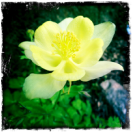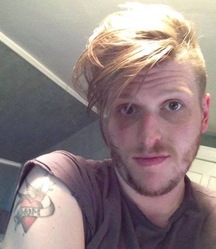ASSAY: A JOURNAL OF NONFICTION STUDIES
2.1
2.1
IntroductionWe run an advocates program at a small liberal arts college in upstate New York. We are often a survivor’s first point of contact in the aftermath of a sexual assault, and we need to prepare our advocates for dealing with the realities of sexual assault. As advocates, we shepherd survivors through the process of dealing with police, medical personnel, and university administration in the aftermath of an attack. These systems are often distrustful and outright hostile to survivors.
90% of survivors who seek help after an assault experience secondary victimization, a retraumatization that increases the chances of developing post-traumatic stress disorder (PTSD), from police or medical personnel. It is vital that our advocates empathize with the survivor and not contribute to that trauma. Advocates’ programs such as ours have been shown to shown to decrease the distress caused by contact with the legal system, increase the chances of a report being taken by police, and increase the likelihood of medical personnel offering contraception and sexually transmitted disease prophylaxis in the aftermath of an assault. As such, it is critical that our advocates be fluent in not only the academic literature surrounding sexual assault, but also the emotional difficulties that accompany helping survivors through the process. If advocates are overwhelmed by the visceral experience of helping survivors, they will not be effective in their duties. Thus, as part of our training before we allow advocates to work directly with survivors, we require them to read relevant scientific literature alongside memoir and personal essays that deal with sexual assault. The result is a marriage of the head and the heart. The academic literature provides a basis for answering the interrogations of police, medical personnel, and university administrators—why can’t she remember what happened to her? why didn’t s/he fight back or run away?—while the creative nonfiction allows our advocates-in-training to empathize with survivors and deal with the emotions that accompany providing direct service in the aftermath of a sexual assault. The pairing of the two deepens our advocates’ understanding of both sets of texts.
|
|
Schorn holds that Empowerment Self-Defense differs from the old, male-designed-and-taught self-defense models of the 1950s and 1960s in that ESD teaches practical skills within the context of rape culture; it addresses the mental, emotional, physical, spiritual, and cultural components of self-defense.
In practice, ESD specifically addresses the vulnerability of at-risk women. Every session begins with “The No Game,” in which students pair up and take turns asking each other questions for a full minute. The goal is to respond with “No,” loudly and forcefully, to each question. It’s hard not to see how efforts like the No Game clearly addresses the low sexual refusal assertiveness that is the single biggest risk factor for first-time victimization among college women.
Critics of teaching women to defend themselves have two final charges to levy—that a woman could not possibly win in a fight against a man and that fighting back against an attacker will only incur additional injury. However, studies have determined that those assumptions are invalid. Janice A. Zoucha-Jenson and Ann Coyne, authors of “The Effects of Resistance Strategies on Rape,” conducted research to determine which resistance strategies were associated with rape avoidance and whether physical resistance in particular was associated with additional injury. They conclude, “We analyzed resistance strategy by outcome of the assault using a chi-squared test. Forceful verbal resistance, physical resistance, and fleeing were all associated with rape avoidance. No resistance and non-forceful verbal resistance were associated with being raped.”
In turn, the most effective resistance strategies are fundamentally forceful. More specifically, forceful verbal resistance, physical resistance, and fleeing offered the best chances of successfully avoiding an assault. Victims who offered no resistance were raped in 93.5% of cases studied, while those who offered nonforceful verbal resistance were raped in 95.8% of cases. Running away was successful in 45% of cases, forceful verbal resistance was successful in 50% of cases, and women who chose to fight back successfully resisted rape in 54.5% of cases.
Tark and Cleck’s study, “Resisting Rape the Effects of Victim Self-Protection on Rape Completion and Injury” had similar findings. They summarize that “actions such as attacking without weapons, struggling, running away or hiding, and trying to attract attention or help appear to reduce the risk of rape completion more than 80% compared to nonresistance.” Further, the only self-protective (SP) tactics associated with an increased risk of rape completion were non-forceful tactics—cooperating with the offender, or arguing and pleading with the offender. Additionally, the evidence does not support the notion that resistance increases the victim’s chances of suffering additional injury beyond the rape itself.
Fighting works. In fact, it is the single most effective method of rape prevention. The results from the two studies prove that forceful resistance tactics through self-defense mechanisms are inherently valuable when it comes to warding off a rape attempt, without the increasing risk of further injury beyond rape itself. In addition to the two studies, Schorn’s essay demonstrates the value of Empowerment Self-Defense by invalidating the myth that women should not be taught self-defense.
While we never tell anyone what they should do, we strive to offer an at-risk population the best information available on which they can make their own decisions. Forceful verbal and physical resistance, of the kind advocated by Schorn, provides the best chance of evading a sexual assault, and incurs no risk of additional physical injury.
In practice, ESD specifically addresses the vulnerability of at-risk women. Every session begins with “The No Game,” in which students pair up and take turns asking each other questions for a full minute. The goal is to respond with “No,” loudly and forcefully, to each question. It’s hard not to see how efforts like the No Game clearly addresses the low sexual refusal assertiveness that is the single biggest risk factor for first-time victimization among college women.
Critics of teaching women to defend themselves have two final charges to levy—that a woman could not possibly win in a fight against a man and that fighting back against an attacker will only incur additional injury. However, studies have determined that those assumptions are invalid. Janice A. Zoucha-Jenson and Ann Coyne, authors of “The Effects of Resistance Strategies on Rape,” conducted research to determine which resistance strategies were associated with rape avoidance and whether physical resistance in particular was associated with additional injury. They conclude, “We analyzed resistance strategy by outcome of the assault using a chi-squared test. Forceful verbal resistance, physical resistance, and fleeing were all associated with rape avoidance. No resistance and non-forceful verbal resistance were associated with being raped.”
In turn, the most effective resistance strategies are fundamentally forceful. More specifically, forceful verbal resistance, physical resistance, and fleeing offered the best chances of successfully avoiding an assault. Victims who offered no resistance were raped in 93.5% of cases studied, while those who offered nonforceful verbal resistance were raped in 95.8% of cases. Running away was successful in 45% of cases, forceful verbal resistance was successful in 50% of cases, and women who chose to fight back successfully resisted rape in 54.5% of cases.
Tark and Cleck’s study, “Resisting Rape the Effects of Victim Self-Protection on Rape Completion and Injury” had similar findings. They summarize that “actions such as attacking without weapons, struggling, running away or hiding, and trying to attract attention or help appear to reduce the risk of rape completion more than 80% compared to nonresistance.” Further, the only self-protective (SP) tactics associated with an increased risk of rape completion were non-forceful tactics—cooperating with the offender, or arguing and pleading with the offender. Additionally, the evidence does not support the notion that resistance increases the victim’s chances of suffering additional injury beyond the rape itself.
Fighting works. In fact, it is the single most effective method of rape prevention. The results from the two studies prove that forceful resistance tactics through self-defense mechanisms are inherently valuable when it comes to warding off a rape attempt, without the increasing risk of further injury beyond rape itself. In addition to the two studies, Schorn’s essay demonstrates the value of Empowerment Self-Defense by invalidating the myth that women should not be taught self-defense.
While we never tell anyone what they should do, we strive to offer an at-risk population the best information available on which they can make their own decisions. Forceful verbal and physical resistance, of the kind advocated by Schorn, provides the best chance of evading a sexual assault, and incurs no risk of additional physical injury.
Vicarious Trauma
- Rox, Deb. “Truth is a Fire I Couldn’t Hold.” The Toast. December 9, 2014.
- Schauben, Laura J., and Patricia A. Frazier. “Vicarious Trauma: The Effects on Female Counselors of Working with Sexual Violence Survivors.” Psychology of Women Quarterly 19.1 (1995): 49-64.
- Trippany, Robyn L., Victoria E. White Kress, and S. Allen Wilcoxon. “Preventing Vicarious Trauma: What Counselors Should Know when Working with Trauma Survivors.” Journal of Counseling & Development 82.1 (2004): 31-37.
Vicarious trauma is a condition in which persons who provide direct service to survivors of sexual assault (e.g. advocates, counselors, therapists, etc.) begin to experience the symptoms of post-traumatic stress disorder (PTSD) themselves. Although studies have found that approximately half of clinicians treating sexual assault survivors experience vicarious trauma, it is a generally underdiscussed phenomenon. Because it is so unknown, it is difficult to explain to new advocates along with why they should take it seriously.
Deb Rox’s “Truth is a Fire I Couldn’t Hold” documents her “burnout” and “compassion fatigue” while she worked for a sexual violence advocacy program. Though she never uses the phrase “vicarious trauma” in the essay itself, Rox’s essay is a perfect illustration of the effects of vicarious trauma. It serves as a vivid example of the effects of vicarious trauma for our advocates.
Symptoms of post-traumatic stress disorder (PTSD) are also common among sexual violence counselors. Frazier and Schauben’s study “Vicarious Trauma the Effects on Female Counselors of Working with Sexual Violence Survivors” aims to (1) assess the effect working with sexual violence survivors has on counselors and (2) to identify effective coping strategies used by counselors. The study found that “Counselors who work with a higher percentage of survivors report more disrupted beliefs about themselves and others, more PTSD-related symptoms, and more ‘vicarious trauma’ than other counselors who see fewer survivors.” The researchers found that the schemas that are commonly altered are those involving the goodness of other people.
Additionally, when working with survivors, counselors mention emotional distress (anger) and changes in beliefs (loss of trust). Most counselors learned to cope using both instrumental and social support. Qualitative research showed that common strategies included exercising, meditation, and participating in leisure activities.
Rox states, “The myth that rape victims lie has become a fetish. Rape is about power, and this myth makes us all feel like we fall on the side of power. This was a huge factor in my burnout. All those system players—the university administrators, the cops, attorneys, you name it—were accustomed to protecting power, their own included.” As an assault survivor herself, Rox discusses that primary trauma has led many, including herself, to social service careers because survivors are often drawn to people who have gone through similar experiences.
She continues that this involvement often leads to a special kind of burnout called “compassion fatigue.” One of the behaviors associated with compassion fatigue is called the “Silencing Response” and it refers to the way counselors and clinicians keep their distance from traumatic material. All of these factors contributed to Rox’s vicarious trauma and eventual burnout. Although it is rarely discussed, vicarious trauma is relatively common among clinicians, advocates, and counselors that work with survivors and traumatic material. Rox’s essay makes the feelings, symptoms, and behaviors associated with vicarious trauma more palpable to those who are unfamiliar with advocacy work and its potential effects.
Rox’s essay could potentially help advocates determine if the traumatic material associated with sexual violence advocacy work affects them as well. For counselors and advocates, acknowledging the effects of working with survivors could lead to the development of effective coping strategies.
While scientific documents are a wonderful enterprise, they often lack the brutal reality of their subject matter. The clinical literature is valuable, but survivors are often only able to articulate their experience in response to a preset list of questions. Both science and literature are essential for training our advocates in the work that they do, but it is only through nonfiction that we are able to present our advocates-in-training with the voices of survivors themselves, unfiltered by clinical protocols. We are deeply grateful to the writers of these works for helping to fill the gaps in the scholarly literature.
__________
Authors’ Note: There are certainly gaps in our bibliography— the unique experiences of male and LGBTQ survivors, as well as the experiences of survivors of college stalking and dating violence. It is our hope that this piece becomes a living document. If you have written or know of a piece that would help to elucidate the lived experiences of survivors, please email Christian Exoo. It is our hope to make this list as comprehensive as possible and with your help, we will update this page accordingly.
Click here to download a printable PDF with Works Cited.
|
Sydney Fallone is currently a junior at St. Lawrence University in Canton, NY. A double major in Government and Economics, she is an active member of the SLU Advocates, The Thelomathesian Society, and The Hill News. As an Advocate, Sydney serves as a support system for survivors and other individuals affected by sexual assault, stalking, domestic violence, and abuse. As a student government representative, she is a Sexual Violence Commission member as well as a Student Life Committee member. Through her membership she aims to facilitate interaction of on-campus sexual assault advocacy groups and the administration, which has ultimately resulted in greater transparency between the two entities. Additionally, Sydney is an Opinions Editor of St. Lawrence University's student-run newspaper. As an editor, she aims to use her section as a place for dialogue of important and relevant current events and social issues.
|
Related Works
|
Crystal N. Fodrey
Teaching CNF Writing to College Students: A Snapshot of CNF Pedagogical Scholarship 2.1 Pedagogy |


